Have you ever tried to have a conversation with someone who just keeps talking about themselves and not listening to a word you're saying? Or worse, not even giving you a chance to speak?
How quickly did your level of engagement and enthusiasm plummet?
That's what sales engagement can feel like for your customers if it's not done right. It’s a key element of your sales team’s performance, but it doesn’t have to be hard to measure—or enhance.
By using simple tools like email surveys and multichannel outreach, you can track and improve sales engagement and make sure your customers are happy, engaged, and most importantly, listening to what you have to say.
Eager to see how it works?
In this post, we'll cover how the right sales engagement know-how can help you:
- Measure your sales engagement data
- Incorporate and improve sales engagement solutions
How to measure sales engagement
Most sales engagement solutions will offer detailed sales engagement insights to assist you in understanding what's working and what's not. The main things you'll want to look out for are:
- Email opens: This is the most basic metric, but also one of the most important. If you're not getting opens, it's unlikely you'll see any other results from your sales engagement efforts.
- Email replies: This is another simple metric. If you're getting replies, it shows that your audience is actively engaging with your engagement efforts.
- Email link clicks (content): These are key indicators that your recipient is interested in what you have to say and is willing to learn more.
- Callbacks: If your recipients are calling you, that means they (most likely) want to take action. This is evidence that what you're doing is working!
- LinkedIn InMail response rate: This is a LinkedIn-specific metric that can indicate whether or not your message resonates with its recipients—and if it doesn't, what can be done to improve it.
- Meetings booked: If a high percentage of leads are taking the time to set up meetings with you, that's a good sign your strategies are set up for success.
- Deals closed: The ultimate goal is to close deals, and tracking these each month (i.e., tracking the progress of each sales opportunity and determining which opportunities resulted in successful deals) will help you measure sales engagement.
Mixmax combines all this data and showcases your contacts' engagement score (from highest to lowest). If you're an SDR or AE, seeing who is the most engaged helps you figure out who to spend more time on—and who to contact ASAP.
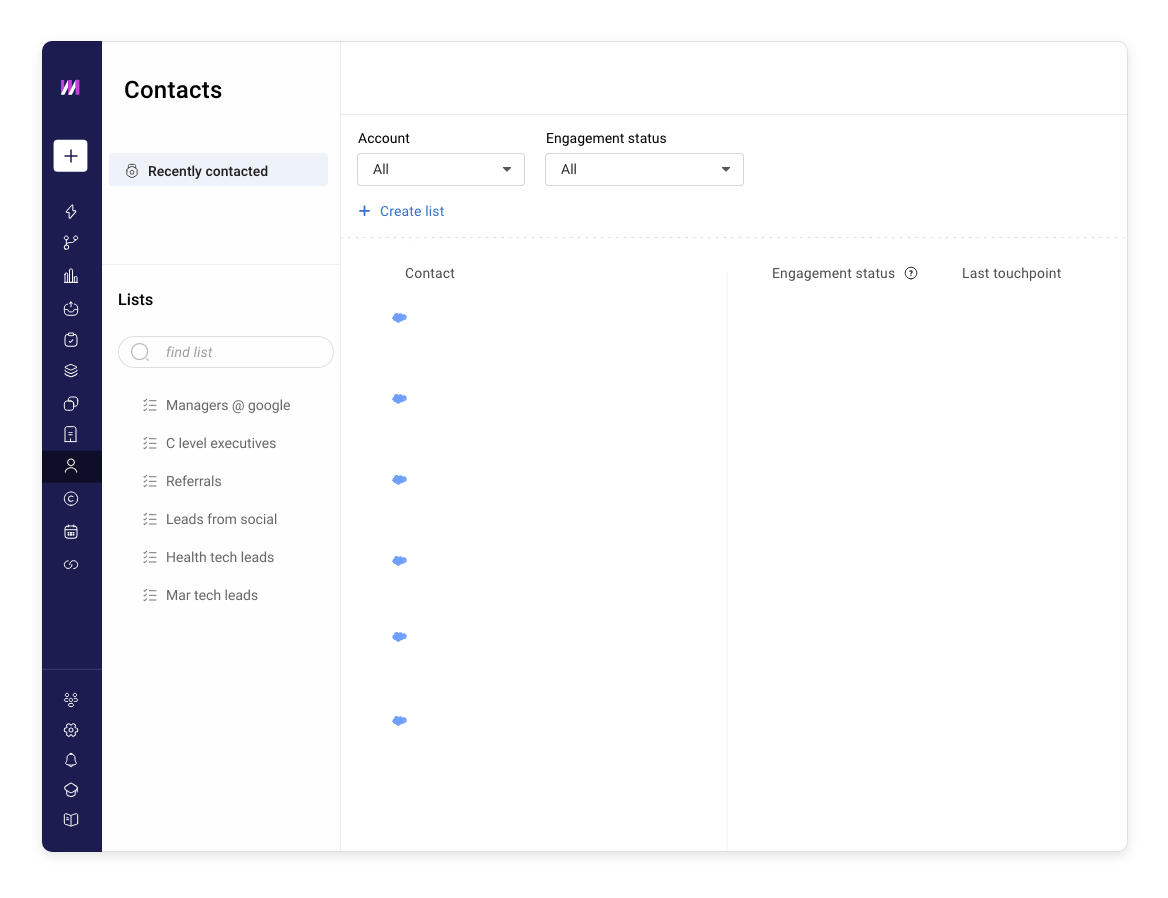 Mixmax's Contacts page with engagement statuses
Mixmax's Contacts page with engagement statuses
How to improve sales engagement
1. Use email enhancements
When only 8.5 percent of all outreach emails succeed in getting a response, you want to be doing everything in your power to capture your prospect’s attention.
These email enhancements should get you to do just that.
- Polls and surveys: You can use an in-email polls and surveys tool (see below) to get leads to easily reply to an email and/or to get immediate feedback from customers. For example, you can include a poll that asks the recipient if they’re interested in reaching their Q1 goals, or you can include a survey that asks an existing customer what new feature they’d be interested in seeing this year.
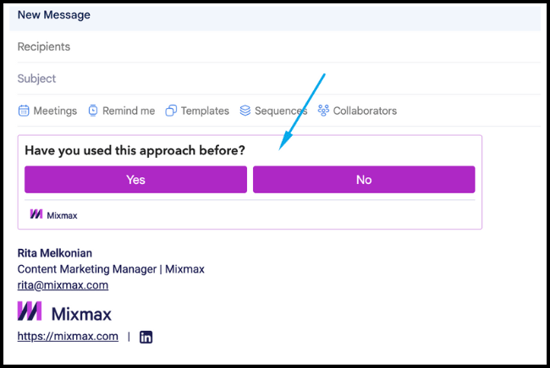
- One-click meetings: You can create one-click meetings by linking your calendar with a scheduling tool. This allows recipients to book a meeting directly from the email with just one click, avoiding the back-and-forth.
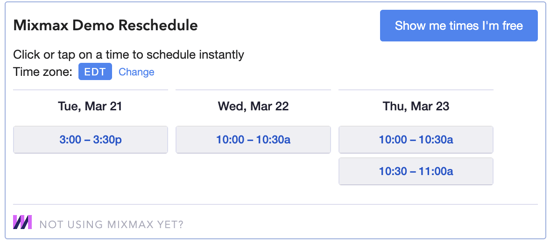
- Personalized video messages: Using a tool like Loom, sending personalized video messages will give your clients something they can't get anywhere else. Besides, compared to text-based emails, video content is 13 percent more likely to be remembered.
- Reports: Create reports that are industry-specific, relevant, and that will add value for your recipient.
- Infographics: A better way to present a lot of information in an easy-to-digest format is to create an infographic. You can use one to show your clients how they're doing compared to their competitors, or maybe even how they're spending their sales dollars.
- Interactive calculators: Another engaging way to help your clients see how they're doing is by creating interactive calculators such as ROI calculators or cost savings calculators. That way they can see the value of your product or service.
- Video tutorials: You can use these videos to get your prospects to understand what you do and explain how your product or service works and how it can benefit them.
- GIFs that demonstrate how to use a feature (example below): If you have a product or service that includes features, it's a good idea to create GIFs that demonstrate how to use them with a GIF attachment tool.
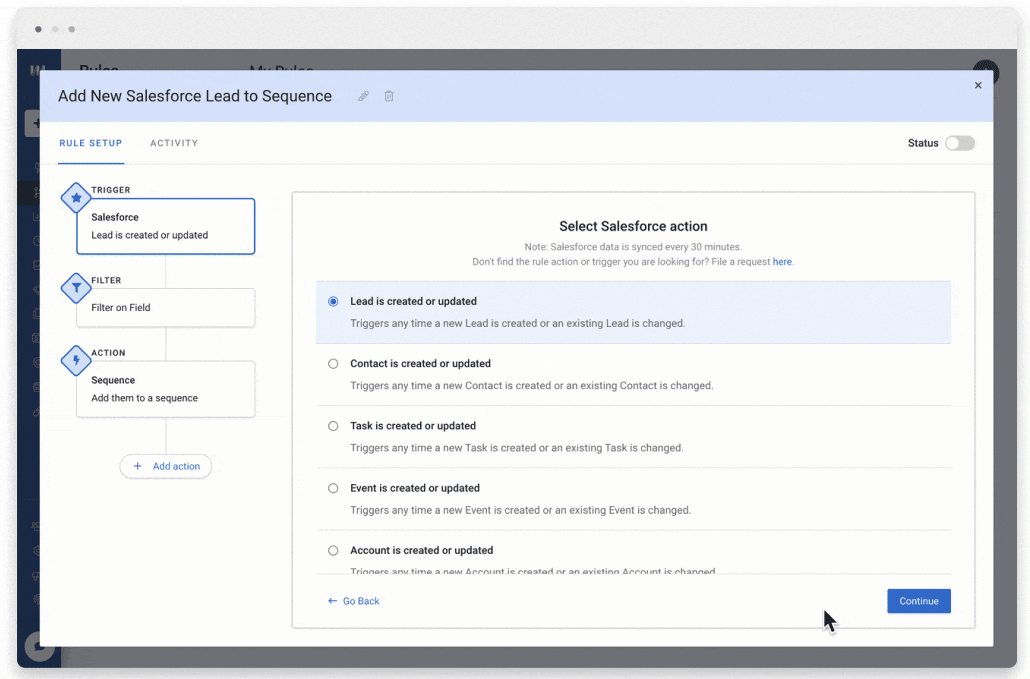 Mixmax's GIF attachment tool lets you add mini tutorials of relevant features (like this one) directly in your emails.
Mixmax's GIF attachment tool lets you add mini tutorials of relevant features (like this one) directly in your emails.
2. Send emails at the right time
The next step is to determine when to send your emails. This depends on a number of factors, including the stage of the sales cycle and the type of email being sent.
For example, if you're sending out an introductory email to a new lead, it's best to wait until they've had some time to digest all your information before following up with another message.
Knowing how to nail your email timing is a skill that can be learned with enough practice, but like most sales tactics, technology can help! AI tools can perfect your outreach success rate by recommending the best times to send your messages.
Mixmax has a built-in feature that tells you when your lead, opportunity, or customer is most likely to be active in their Gmail inbox based on collected data (check it out below):
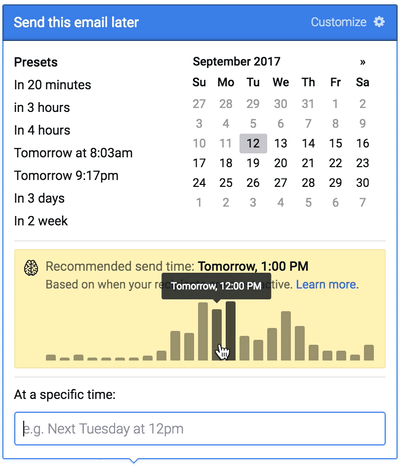 Mixmax's Recommended Send Times feature
Mixmax's Recommended Send Times feature
3. Make your messaging relevant and personalized
These standards are a huge part of making your messaging more effective because it shows prospects you're taking the time to research and understand their needs—which could convince them to pay attention to your outreach efforts.
Personalization is often the easiest place to start since the information you need is accessible through LinkedIn, social media profiles, and more.
Do some digging into your prospect and include some of what you find in your emails, like using their name to greet them (duh!), mentioning a piece of content or post they’ve published, and anything else that might capture their attention.
Next, it's time to make sure what you're sending is relevant to their needs, which usually calls for extra research. Look into their company, their work history, and other avenues to identify their main goals and pain points. Then, you can make the case for why your product or service is a good fit for them.
Check out the interview below with Jen Allen-Knuth (aka DemandJen) for tips on relevant outreach.
4. Create call tasks
If you're a seller who deals with phone calls a lot while engaging with prospects, the innovation of call tasks is probably a welcome development.
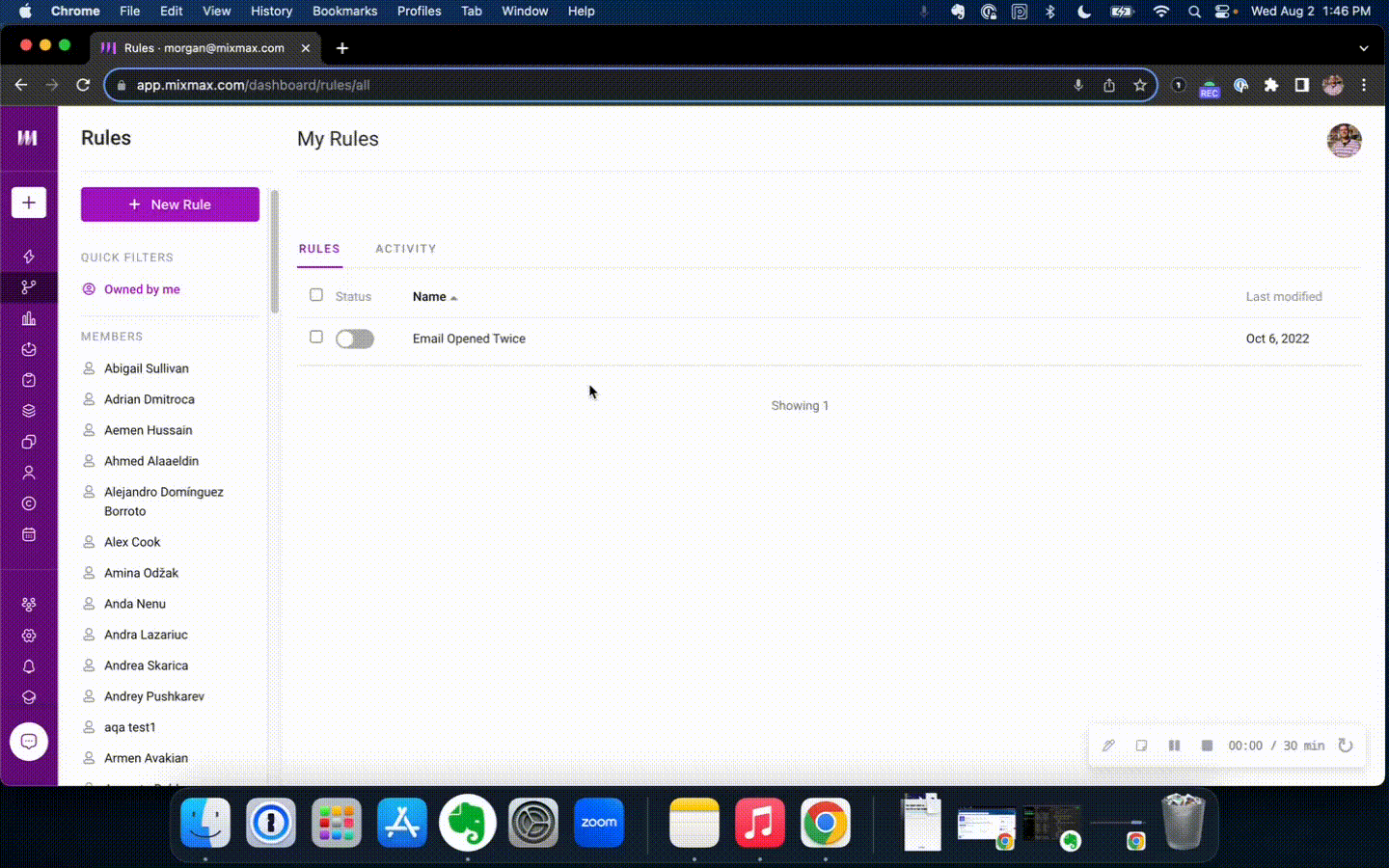 Mixmax Call Tasks
Mixmax Call Tasks
A solution with this feature can streamline your workflow significantly, from syncing to your CRM to automating call reminders to helping you specify your incoming phone number (local vs. personal) to setting up auto-record even before hopping on the call.
5. Implement sales automation
It’s not possible to keep up in today’s sales world without sales automation. It’s just not.
Sales automation can make a MEGA difference in improving your sales engagement and generating conversions. A few ways to consider using it include:
- CRM data entry automation: Automatically keep your prospects’ data up to date in your CRM so nothing falls through the cracks.
- Workflow automation: You can create powerful workflows that trigger email sequences and tasks based on how your recipients interact with your emails (opening an email, booking a meeting, answering polls, etc.). This way, you don’t have to follow up manually with every prospect.
- Automatic reminders: Post-it notes are a thing of the past. You can now set up automatic reminders that are triggered if you do not get a response from your recipient by a certain date/time.
- Email analytics: You can track who opens your emails (and when), who replies, which emails get ignored, and what links people click on within your campaigns. This information allows you to tweak your messages for maximum engagement based on concrete data.
| Related post: 16 Non-Obvious Cold Email Tactics to Increase Reply Rates |
6. Use A/B testing
You can use A/B testing to test different versions of your emails and see which one gets better results.
Here's how you can do it:
- Decide what aspect of the email you want to test, such as the subject line, opening line, call to action, piece of content, etc.
- Create two versions of the email, but make sure each version ONLY differs in the aspect you want to test.
- Split your prospects/leads into two groups.
- Analyze the results (open rates, click-through rates, etc.) to determine which email performed better.
Once you've found what works best, you can use it as a template for future outreach campaigns and even share it with the rest of the sales team.
In the long run, A/B testing can be used to optimize conversion rates and increase sales by ensuring your messaging is perfectly customized for your audience—and that you're not wasting time with irrelevant content.
7. Use a multichannel approach
Just as it's important to understand your sales funnel, you also need to understand how prospects move through it. Now that we live in the digital age, it means you need to engage them through multiple channels—not just carrier pigeon.
You'll recognize a few of the following:
- Email: The first touchpoint for most leads is through email. It's where they'll receive the bulk of their communications from you and your team, so it's essential that you have a strong strategy in place for this channel.
- Phone: While email can be used effectively as an outreach tool, phone calls are still No. 1 when it comes to closing deals. If someone becomes engaged with what they see on LinkedIn or Twitter (or wherever else), chances are they'll reach out via phone call later on in their journey with you.
- LinkedIn InMail: This is a powerful tool for communicating with your leads. It allows you to send messages that are often more personalized than email. You can also use the platform as an effective outreach tool by contacting other professionals in their network and asking them if they would recommend connecting with you.
- Text messages: Text messaging allows for two-way communication in real time, which can help build a relationship with leads and provide an opportunity to address any questions or concerns they may have. As a bonus, it has a high open rate cause, you know, most people check their texts!
| Related post: How to Master Multi Channel Prospecting in Outbound Sales |
Conclusion
When you're ready to get started, remember that there are no shortcuts. Implementing and measuring sales engagement is a long-term commitment, and it requires dedication from everyone involved in the sales process.
But with these tools and knowledge at your disposal, you'll understand exactly how to measure the fruits of your labor, improve them in the future, and enjoy a healthy boost to your revenue because of it.


.png?width=450&height=250&name=Episode%20Graphic%20(1).png)
